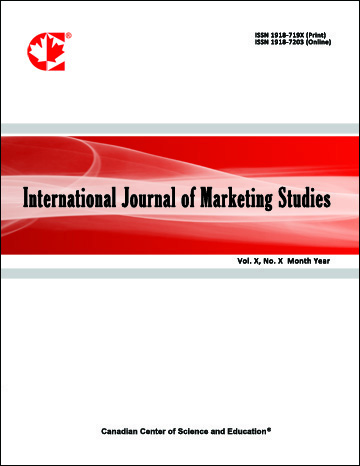Investigate the Impact of Relationship Marketing Orientation on Customer Loyalty: The Customer's Perspective
- Laith Alrubaiee
- Nahla Al-Nazer
Abstract
In today's high competitive and globalize banking context, increasing Customer loyalty emerges as the mostimportant challenges faced by marketers. Cultivating loyal customers is frequently argued to be the single most
important driver of organizations’ long-term financial performance, which can lead to increased sales and
customer share, lower costs, and higher prices. Therefore marketing scholars emphasize the influence of
relationship marketing as a strategically important tool from which customer loyalty can be secured and, as a
result, the attainment of higher competitiveness and enhanced customer satisfaction can be achieved. The
purpose of this study is to empirically investigate the impact of relationship marketing orientation on customer
loyalty. The study also aims to test the impact of demographic variables, in association with relationship
marketing dimensions, on customer loyalty. The study was carried out in 2008 on a convenience sample of 450
respondents through the distribution of structured questionnaires to bank customers within the area of Amman,
Jordan. The data were factor analyzed to determine the key dimensions of relationship marketing orientation
measurement scale. Results confirm that the five dimensions scale (Bonding, trust, communication, satisfaction
and commitment) possess adequate reliability and internal consistency as well as convergent validity. Results of
regression analysis show that relationship marketing orientation is significant in explaining the variation in
customer loyalty. In addition, sex and income displayed a significant impact on the relationship
marketing-customer loyalty relationship. The findings contribute to understanding the relationships between
different dimensions of relationship marketing orientation, customer loyalty and demographic variables; provide
critical implications for bank managers; and highlight directions for future research.
- Full Text:
 PDF
PDF
- DOI:10.5539/ijms.v2n1p155
Journal Metrics
Google-based Impact Factor (2021): 1.34
h-index (July 2022): 70
i10-index (July 2022): 373
Index
- Academic Journals Database
- CNKI Scholar
- EconBiz
- Electronic Journals Library
- Excellence in Research for Australia (ERA)
- GETIT@YALE (Yale University Library)
- Harvard Library
- IBZ Online
- Infotrieve
- JournalTOCs
- LOCKSS
- MIAR
- PKP Open Archives Harvester
- RePEc
- ResearchGate
- ROAD
- Scilit
- SHERPA/RoMEO
- Stanford Libraries
- UCR Library
Contact
- Alyssa SunEditorial Assistant
- ijms@ccsenet.org
